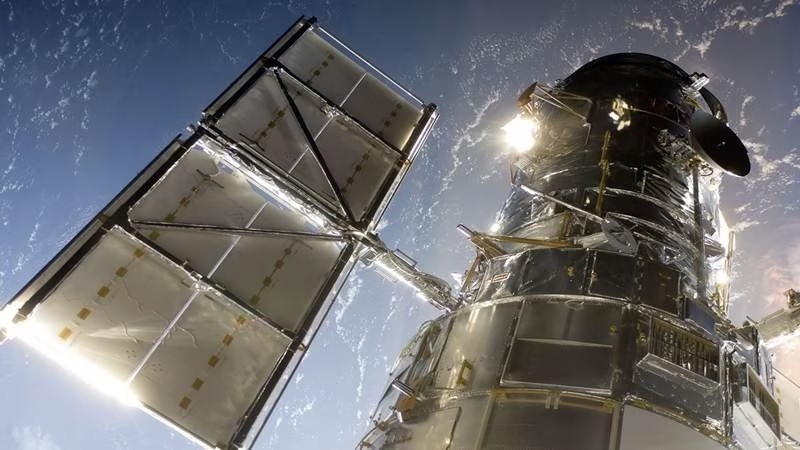
Hubble Space Telescope

05.12.2023
Hubble Space Telescope , Daily Current Affairs , RACE IAS : Best IAS Coaching in Lucknow
|
For Prelims: About Hubble Space Telescope,Important points,Structure of Hubble Space Telescope For Mains Paper: Features of Hubble Space Telescope,Instruments of the Hubble Space Telescope |
Why in the news?
Recently, the Hubble Space Telescope has been put into safe mode, as NASA has halted operations.
Important points:
- Hubble automatically entered safe mode on November 23 when one of its three gyroscopes gave a faulty reading.
- Those three gyroscopes measure its turn rate and are critical to the system that makes sure the telescope is pointed in the right direction.
- NASA is working to restart the Hubble Space Telescope after it went into safe mode due to a malfunction in its gyroscope.
- In the 2009 Space Shuttle service mission, six new gyros were installed, with only three currently operational, including one that had irregularities.
About Hubble Space Telescope:
- The Hubble Space Telescope was launched on April 24, 1990.
- The Hubble Space Telescope is a large, space-based observatory of NASA and the European Space Agency.
- The Hubble telescope was developed by the American space agency 'NASA' in collaboration with the European Space Agency.
- It was placed in its orbit with the help of the American spacecraft Discovery.
- The Hubble Space Telescope has been in operation for decades, but its technology is aging and is likely to be permanently offline.
- It was named 'Hubble' after American astronomer Edwin Ponwell Hubble.
- It is the only telescope designed for servicing in space.
- The Space Telescope Science Institute (STScI) selects Hubble's targets and processes the resulting data, while Goddard Space Flight Center controls the spacecraft.
Features of Hubble Space Telescope:
- The Hubble Space Telescope is the first astronomical observatory in orbit around Earth with the capability to record images in wavelengths of light spanning from ultraviolet to near-infrared.
- The instruments on the Hubble Space Telescope observe primarily in the ultraviolet and visible parts of the spectrum. It can observe only a small range in the infrared, from 0.8 to 2.5 microns.
- Whereas, the James Webb Space Telescope, with its four scientific instruments, observes primarily in the infrared range and provides coverage of light with wavelengths from 0.6 to 28 microns.
- Hubble orbits about 340 miles (547 km) above Earth's surface.
- Hubble is the first space-based observatory specifically designed for servicing while in orbit.
- To date, the telescope has made more than 1.5 million observations, collecting data and providing views that astronomers were unable to capture from the ground.
Objective:
- Its main objective was to explore the universe in visible, ultraviolet and infrared wavelengths.
Structure of Hubble Space Telescope:
- Hubble has a 2.4 m (7.9 ft) mirror covered with a layer of aluminum and magnesium fluoride.
- It is always kept at 21 degrees centigrade.
- Its four main instruments see in the ultraviolet, visible, and infrared regions of the electromagnetic spectrum.
Instruments of the Hubble Space Telescope:
- When it was launched, HST had five scientific instruments:
- Wide Field and Planetary Camera (WF/PC),
- Goddard High Resolution Spectrograph (GHRS),
- High Speed Photometer (HSP),
- Faint Object Camera (FOC)
- Faint Object Spectrograph (FOS)
- aftermarket equipment
- Advanced camera for services.
- Cosmic Origins Spectrograph.
- Fine Guidance Sensor.
- NICMOS / Near Infrared Camera and Multi-Object Spectrometer (NICMOS, discontinued since 2008)
- STIS / Space Telescope Imaging Spectrograph (STIS)
Wide Field Camera 3 (WFC3)